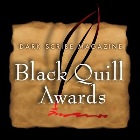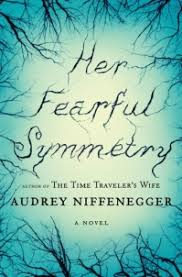After hearing from multiple sources about
Firmin: Adventures of a Metropolitan Lowlife by Sam Savage, I added it to my "to-read list;" however, I was not impressed, and I though I would be. Look at this review from Booklist:
In Savage's darkly comic debut, the titular metropolitan lowlife is a rat, albeit one with lofty literary ambitions. The runt of 13 siblings spawned in the basement of a shambolic Boston bookshop, Firmin survives his lean first weeks by munching on the edges of books. He quickly develops a predilection for actually reading them, too. Soon he's perusing everything from Joyce to compendiums of dirty jokes and even developing a secret fondness for the bookshop's owner, Norman. Tutored by a sign-language book, Firmin tries to communicate with Norman and his human brethren with predictably disastrous results until an obscure science fiction author, who writes about rats and lives above the bookshop, takes him in as a pet. There Firmin enjoys a brief respite of security, writing odes in his head and dreaming of glory, until the wrecking ball threatens the decaying neighborhood. Blending philosophy and abundant literary references with originality, Savage crafts a small comic gem about the costs and rewards of literary illusions.
So, I should have loved this book. It is darkly comic, it has the speculative element of an anthropomorphic animal, and it is all about books and reading; all things I love. So if the appeals all fit my tastes why didn't this book work for me?
This is a good opportunity to talk about using only appeal to match a book with a reader. Even though I preach about the superiority of matching the right book to the right reader when you focus on appeal, there are no guarantees. This is why I always tell patrons that while I think the book I am giving them is a good suggestion for them based on their likes, they still may not enjoy it. What I say excatly is, "If you find you aren't enjoying the book, close it up and bring it back. We can find you something else; just look at all the books we have waiting for you." I also remind them that we don't ever check to see if they have finished a book, so feel free to not finish it.
So why didn't I like this book. Well, although it had the good appeal matches for me that I mentioned above, I was turned off by all of the digressions the narrator makes. Firmin, the rat is narrating the book, but he is too scattered for me. It took more than half of the book for him to find focus. Also, the book was too
snarky; it was as if the author was trying to hard to be dark and unfocused so as to be cool. It felt forced to me.
Also, I did not care about Firmin or the humans be befriended. Without caring about them or their plight, I could not get into the book. This is a character driven book, but I did not enjoy the charcaters. I usually don't need to sympathize with the main character in order to like a book. That was not the problem. I just did not care to be bothered. The characters did not grad my attention and demand to be followed through the story.
I think I can put
Firmin in the same category as
Captain Freedom, which I also did not enjoy (
click here and scroll down to see what I had to say). Both have too many references and are too obviously ironic for me. However, since
ever reader reads a different version of the same book, I know there are many other readers for whom this book struck the perfect chord, Click
here and
here to see what some of these Firmin-lovers have to say.
Readalikes: On the other hand, there are books similar to
Firmin which I did enjoy. If you want to read a book about people/animal interactions, from the animal's perspective, in an urban environment, with a darkly comic tone, I think
The Roaches Have No King by Daniel Evan Weiss is an oldie but goody. I loved this book. It is very similar to
Firmin in theory, but in practice, I enjoyed it much more. I still give this "
dustie" out to readers.
Christopher Moore is a great example of an author who successfully crafts darkly comic, urban stories with speculative elements. Try
A Dirty Job.
And don't forget the king of all anthropomorphic novels,
Watership Down. If you have never read it, put down
Firmin and pick it up instead. Contrary to popular belief,
Watership Down is not a kid's book; it is a very adult cautionary tale.














